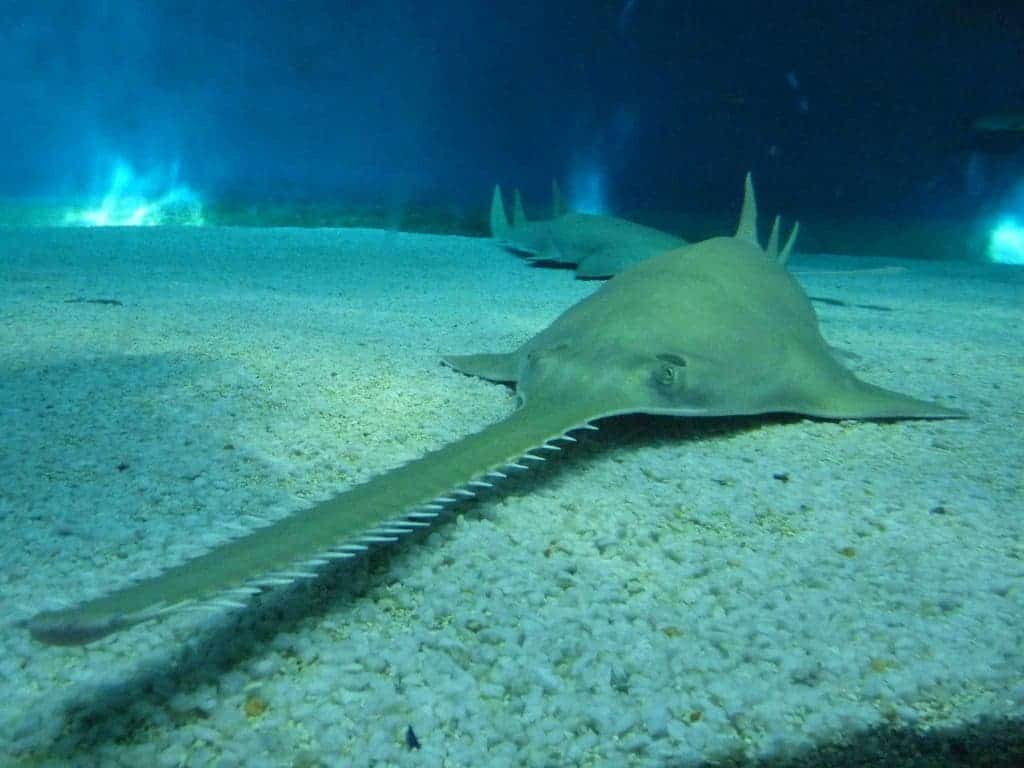A routine DNA test came up with some extremely surprising results – female sawfish in Florida reproduce without mating with males. This is among the very few times this process was observed in vertebrates and might force scientists to rewrite biology books.

“This could rewrite the biology textbooks,” study co-author Kevin Feldheim of the Pritzker Laboratory at the Field Museum of Natural History in Chicago, where the DNA fingerprinting was conducted, said in the statement. “Occasional parthenogenesis may be much more routine in wild animal populations than we ever thought.”
Parthenogenesis is a form of asexual reproduction in which growth and development of embryos occur without fertilization. In animals, parthenogenesis means development of an embryo from an unfertilized egg cell. This type of virgin birth is not as uncommon as you’d think – it’s often seen among invertebrates, and rarely happens in vertebrates. For example, the Komodo Dragon the world’s largest living lizard, is known to give birth through parthenogenesis. Also, the same thing has been observed in certain shark, snake and fish species living in captivity. But researchers were really not expecting to see it in sawfish.
“There was a general feeling that vertebrate parthenogenesis was a curiosity that didn’t usually lead to viable offspring,” said one of the researchers, Gregg Poulakis from the Florida Fish and Wildlife Conservation Commission.
Sawfishes, also known as carpenter sharks are actually a family of rays characterized by a long, narrow, flattened nose extension, lined with sharp transverse teeth that resemble a saw. Sawfishes should not be confused with sawshark, which have a rather similar appearance. The discovery was made when researchers were conducting DNA tests on the DNA of 190 smalltooth sawfish captured in southern Florida faced with extinction. They wanted to see whether the sawfish are breeding with their own relatives due to the very small population, but they came up with an even more surprising conclusion – they breed… with themselves.

Credit: Florida Fish and Wildlife Conservation Commission (FWC)
“What the DNA fingerprints told us was altogether more surprising: female sawfish are sometimes reproducing without even mating,” said lead author Andrew Fields from Stony Brook University in the US. In fact, one population of sawfish was made up of 3 percent parthenogenesis births.
In other words, you could consider it a miracle – the species is trying to avoid extinction through virgin births.
“Vertebrate animals that we always thought were restricted to reproducing via sex in the wild actually have another option that does not involve sex,” study co-author Demian Chapman, a marine biologist at Stony Brook University in New York, said in a statement. “Rare species, like those that are endangered or colonizing a new habitat, may be the ones that are doing it most often. Life finds a way.”
But if we want to say the full story on this one, humans are the reason the sawfish are going extinct in the first place. Overfishing and habitat destruction have destroyed 99% of the population in the past 25 years, and desperate times call for desperate measures. While in the long term, parthenogenesis leads to reduced genetic diversity and makes the species vulnerable to new threats, in the short run, it may just be the thing that saves them.
“This should serve as a wake-up call that we need serious global efforts to save these animals,” said Feldheim, stressing the importance of conservation measures.


